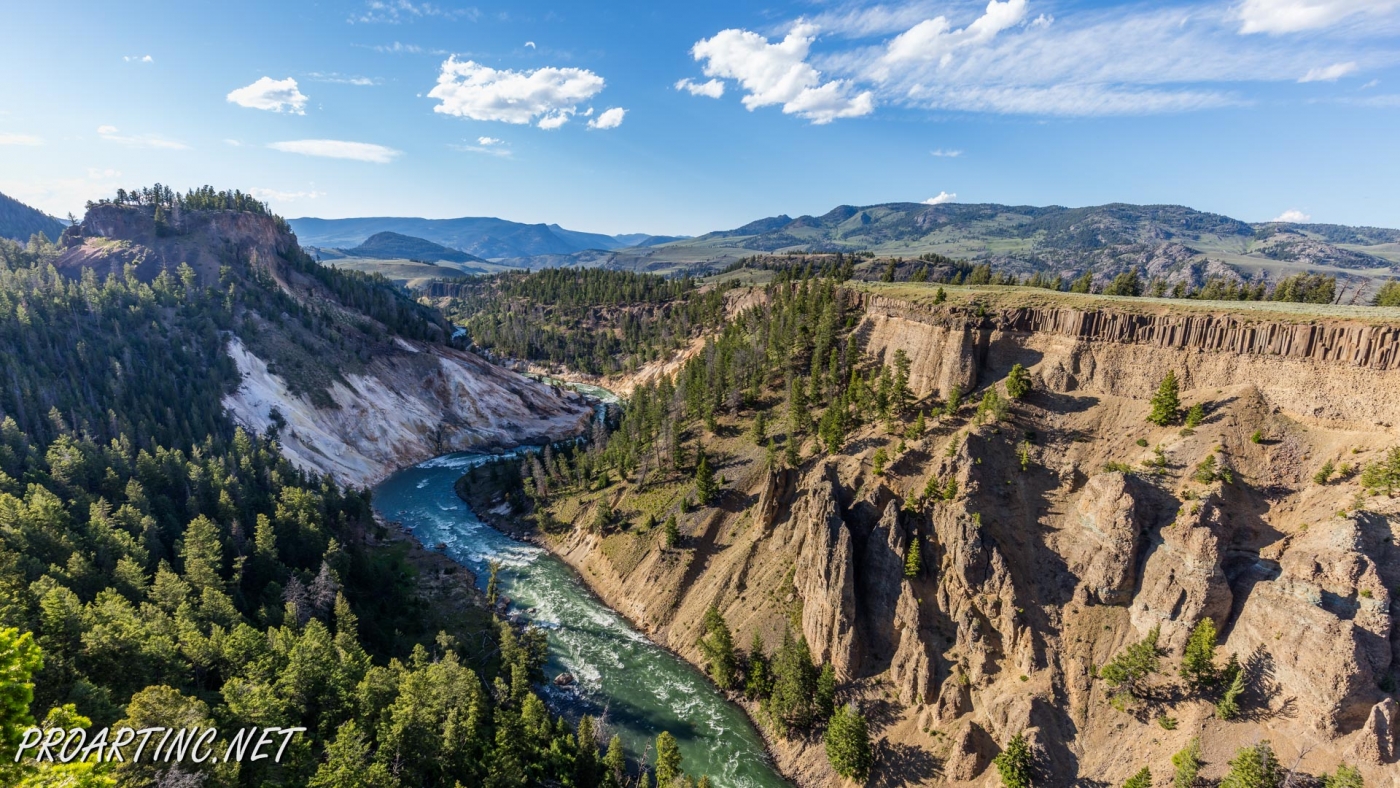Calcite Springs Overlook in Yellowstone National Park
Location: Yellowstone National Park
Length: 0.25 miles
Elevation Gain: 25 feet
GPS coordinates: N 44 54.109 W 110 23.586
Yellowstone is known for its gorgeous views and nature. This is the World’s First National Park that comprises the territory of 2,219,789 acres. The park is home to one of the world’s largest calderas with over 10,000 thermal features and more than 300 geysers. The park has 290 waterfalls and is home for one of the largest petrifiied forests in the world.
One of the most fabulous overlooks, just 1.5 miles south of Tower-Roosevelt Junction offers fantastic views of the famous area in Yellowstone – the Narrows, the narrowest section of the Grand Canyon.
The short trail takes hikers to the spot where colorful walls of the Grand Canyon can be enjoyed. Hikers will take delight in vertical basalt columns and the surrounding area. These cliffs are the evidences of the active volcanic past, scientists say that 25 feet deep lava covered these lands.
The Calcite Springs grouping of thermal springs show us the ending of the Grand Canyon of the Yellowstone National Park. But it doesn’t mean that the park ends here, this gorge and cliffs are home for numerous wildlife species, such as red-tailed hawks, osprey, bighorn sheep and more.
Calcite Spring Overlook will mesmerize hikers by the great views of the Yellowstone River, sulfuric walls and other hydrothermal features. This trail is an easy one, but provides unforgettable views. Just imagine, this is the place where history and present blend together. Be attentive and you will see steam that is rising from a pale slope. Mesmerizing views of the powerful nature!
The Grand Canyon of the Yellowstone Rivet takes its beginning at Upper Falls. This famous canyon is about 20 miles long, more than 1,000 feet deep, and 1,500 to 4,000 feet wide. The Grand Canyon is a wonderful multicolored formation. The colors are caused by oxidation of iron compounds in the rhyolite rock, which has been hydrothermally altered. The colors indicate the presence or absence of water in the individual iron compounds and hydration of minerals in the rock. Yellow color of the canyon that predominates here is a result of iron and sulfur oxidation.
Photo: Roman Khomlyak
Photo Editing: Juliana Voitsikhovska
Information: Marina Petrova
Pictures taken: 27.06.2016



























Leave a Reply
You must be logged in to post a comment.